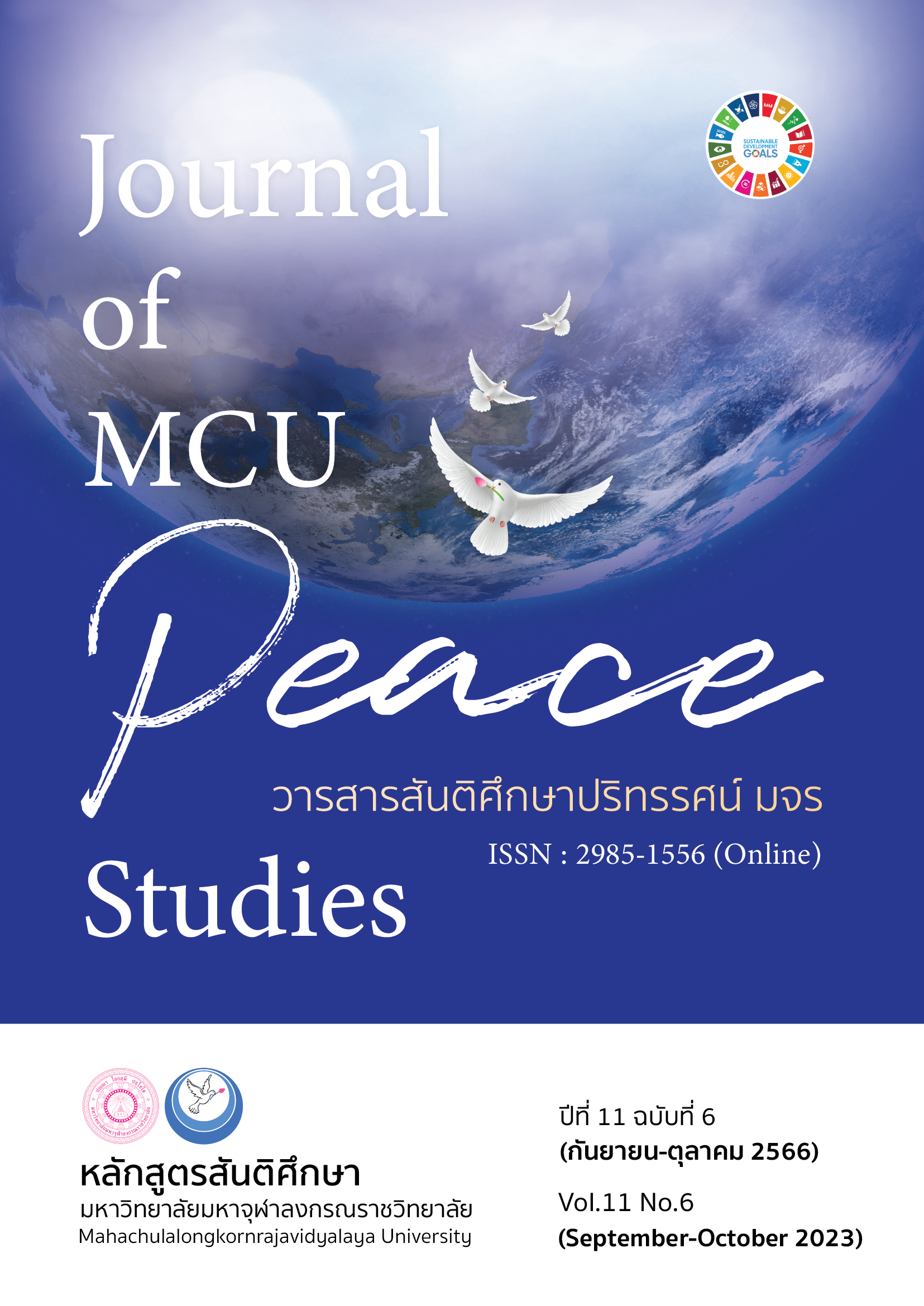The Model for the Well-being Development of High School Students under Secondary Educational Service Area Office Si Sa Ket, Yasothon
Main Article Content
Abstract
The research article consisted of the following objectives: 1) to study components and indicators of student well-being; 2) to explore current and desirable conditions for student wellness; 3) to create and assess the model for the well-being development of students; and 4) to examine the evaluation results of the model for the well-being development of students. The sample group and key informants were experts, teachers, and high school students, for a total of 551 persons. The research tools included the following: 1) interview form; 2) assessment form; 3) questionnaire; 4) recording form; 5) model assessment form; 6) pretest and posttest of student assessment; and 7) satisfaction survey on the model. The statistics used were percentage, mean, standard deviation, and priority needs index (PNI).
From the study, the following results were found: 1) There are 5 components and 25 indicators of student well-being, which are all at the highest level ( = 4.65, S.D. = 0.56); 2) The overall conditions are at the moderate level (
= 3.38, S.D. = 0.37) while the desirable conditions are at the highest level (
= 4.83, S.D. = 0.01). The priority needs index (PNImodified) is ranged between 0.31 – 0.77, which includes public mind and adaptation to society, technology, and the environment; 3) The outcomes of the model comprise 6 aspects namely (1) principles, (2) objectives, (3) content, (4) operation methods, (5) media/ learning resources, and (6) evaluation. According to the evaluation, the model is of utility at the highest level (
= 4.97, S.D. = 0.07), propriety at the highest level (
= 4.87, S.D. = 0.13), and feasibility at the highest level (
= 4.85, S.D. = 0.10); and 4) The posttest score of 99.93 is higher than the pretest, with a statistical significance of 0.05 and a high level of satisfaction (
= 4.47, S.D. = 0.65).
Article Details

This work is licensed under a Creative Commons Attribution-NonCommercial-NoDerivatives 4.0 International License.
Views and opinions expressed in the articles published by The Journal of MCU Peace Studies, are of responsibility by such authors but not the editors and do not necessarily reflect those of the editors.
References
Blackburn, J. (2001). Authentic Learning and Teacher Evaluation. Retrieved February 18, 2010, from http//www.JUEDNE/!!J.htm
Ekakul, T. (2000). Research Methods in Behavioral Sciences and Social Sciences. Ubon Ratchathani: Ubon Ratchathani Rajabhat University.
Erawan, P. (2018). Teacher Production System Using Health Schools as The Base. Journal of the Faculty of Education, 1(1), 27-31.
Kaewkangwan, S. (2006). Psychology of Life Development at All Ages. Bangkok: Department of Psychology Faculty of Arts Thammasat University.
Khamanee, T. (2015). Pedagogical Science: Knowledge for Effective Learning Process Management. (19th ed.). Bangkok: Chulalongkorn University Press.
Ministry of Public Health. (2018). Introduction to Self-Care Manual. Bangkok: The Agricultural Cooperative Federation of Thailand Limited.
Moreno, A. M., & Casillas, J. C. (2007). High-growth SMEs Versus Non-high-growth SMEs: A Discriminant Analysis. Enterpreneurship and Regional Deveiopment, 19(1), 89-88.
Office of the Health Promotion Fund. (2009). The Statute on Health Systems, 2009. Nonthaburi: Wiki Co., Ltd.
Office of the National Economic and Social Development Board. (2017). National Strategy 2018 – 2037. (2nd ed.). Bangkok: Office of the National Economic and Social Development Board.
Rattanaubol, A. (2004). The Process of Training in Non-formal Education. Bangkok: People's Company Limited.
Rueandee, W. (2007). Techniques and Strategies for Developing Student-centered Learning Management Thinking Skills. Nakhon Pathom: Faculty of Education Silpakorn University.
Sonam, S. (2018). The Model of Health Development of Students in Small Elementary Schools. (Doctoral Dissertation). Mahasarakham University. Mahasarakham.
Sriring, S. (2014). The Development of a Health Assessment Model of Secondary Schools. (Doctoral Dissertation). Mahasarakham University. Mahasarakham.
Suthirat, Ch. (2014). The Art of Teaching for 21st Century Learners. Bangkok: Book Center Chulalongkorn university.
Tewanarumitkul, P. (2016). Education to Build Citizens. Bangkok: Thammasat University.
Udomphot, P., & Siriwong, P. (2013). Meaning Origin of Meaning and the Practice Guidelines for Being a Good Citizen of Mathayomsuksa 6 Students at Nakhon Pathom Municipal Sports School Nakhon Pathom Province. Veridian E-Journal, 6(3), 431-442.
Wasee, P. (2000). Health as a Human Ideology. (3rd ed.). Nonthaburi: Office Health Reform.
World Health Organization. (1997). The World Health Report: 1997: Conquering Suffering, Enriching Humanity/Report of the Director-General. Retrieved March 19, 2022, from https://iris.who.int/handle/10665/41900?&locale-attribute=pt
Yamane. (1973). Statistics: An Introductory Analysis. (3rd ed.). New York: Harper and Row.


